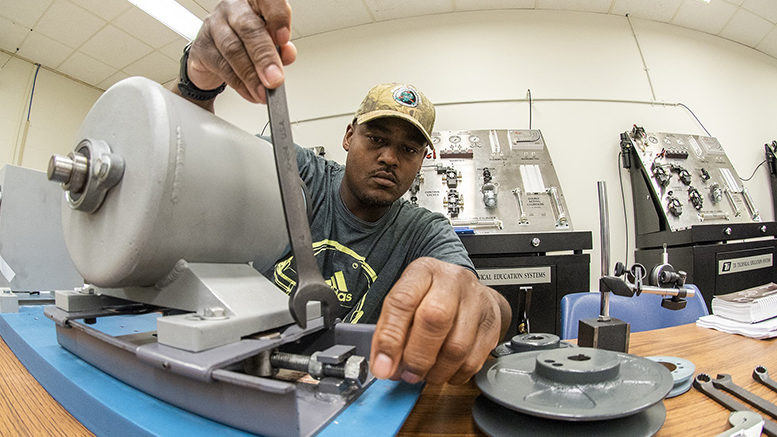Even before Covid, officials at Waubonsee Community College (Illinois) knew well the difficulties historically underserved students had in meeting their workforce education goals. As the virus crisis has only magnified existing equity gaps, leaders at two-year institutions are putting even more emphasis on bridging societal chasms.
“The pandemic has made more aware aware of issues for people of color, but community colleges have always been intentional in supporting diverse students,” says Suzette Murray, associate vice president of education and workforce development at Waubonsee. “We’re continuing to revisit how we recruit for equity, as well as boosting persistence and reducing barriers for all students.”
As executive director of the National Council on Workforce Education (NCWE) — an American Association of Community Colleges (AACC) affiliate council — Murray is seeing Waubonsee’s expanded equity mission realized nationwide. Perks like guaranteed scheduling are emphasized during recruitment, or otherwise quickly applied to give students a leg up.
This excerpt comes from an article in the new issue of AACC’s Community College Journal.
“Guaranteed scheduling is a trend across states, which is important because we understand how certain populations are more challenged in balancing work, school and life,” Murray says. “The coronavirus has motivated us to move faster in implementation, rather than having a slow rollout.”
Onlookers believe the pandemic has accelerated inequities among Black and Latinx Americans, as well as Native Americans and other underrepresented groups. As front-line workers, these populations are more likely to be exposed to illness compared to their white counterparts, a trend supported by higher Covid mortality rates amid individuals of color.
A widening breach in wealth has resulted in disproportionate impacts on postsecondary education and training, to the point where low-income and minority learners may leave higher ed altogether. Approximately 77% of undergraduate students who responded to a May 2020 poll from Education Trust and the Global Strategy Group expressed concerns about graduating on time. Those figures were higher among Black (84%) and Latinx (81%) students.
Murray contends that NCWE member institutions should be redoubling their “equity mindset” when it comes to workforce development research, evaluation, marketing and recruiting.
“Again, the coronavirus has made us more aware of issues faced by underrepresented populations,” she says. “We’ve previously engaged in rollouts and pilots, but now we need to act quicker.”
A call to action
In San Diego, young people have been profoundly tested by pandemic-fueled equity issues, notes San Diego City College (SDCC) President Ricky Shabazz. California hotel, restaurant and tourism workers — mostly younger and more ethnically diverse than the general labor force — have faced the brunt of recent layoffs, he says.
Improving a bleak labor picture requires advocating for a qualified, diverse workforce emerging from the Golden State’s 116 community colleges, Shabazz says. Roughly 7 out of every 10 Black and Latinx learners in California begin their postsecondary education at the two-year level, according to a report from the Campaign for College Opportunity.
“Access is great in that we serve 100% of students, but those students come with real challenges,” Shabazz says. “They might be first-generation or formerly incarcerated. We serve the community at large, and with that comes a need to focus on equity in every sense of the word.”
WDI next month: AACC’s annual Workforce Development Institute will be held virtually January 27-28. Check out the schedule and register.
Shabazz laments the lack of funding for full-time equivalent students attending California’s community colleges, a figure that hovers around $8,600 per FTE. Compounding the issue at SDCC is job loss among enrollees, many of whom worked in hotels, convention centers and other service positions prior to the pandemic. Liability concerns temporarily halted a cosmetology program as well, reflecting a wider issue within a hands-on industry hit hard by Covid.
Younger Black and Latinx workers are also less likely to have occupations that allow them to work from home.
Creative programming and outreach is key to attracting and retaining minority students, observes Shabazz. A pilot partnership with the Department of Defense’s Naval Information Warfare Systems Command is offering students civilian work around computer science, engineering and other technical competencies.
The program’s first iteration drew 30 candidates, many of them women or men of color. Twenty students went into pre-engineering apprenticeships paying $20-$30 hourly, garnering real-world experience for a potentially lucrative career.

